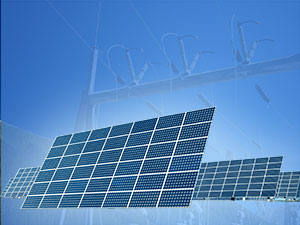
You have probably heard it said that, “no man is an island.” Back in the 1600s, the man who wrote that, John Donne, was thinking about his connection to mankind and the world as he knew it. He could never have imagined just how connected that world would become. From transportation, to energy and communication, we live surrounded by physical and virtual networks. Sharing ideas and information has become as easy as pushing a button, or better yet, a swipe of a finger.
Even at the far reaches of the planet, people are increasingly linked in. And it is here, on the edges of the grid, that innovation is generating new connections. Call it the frontier spirit, or simply a greater need for self-sufficiency, but ideas supplied by isolated yet dynamic “islands” are changing the way we look at network structures. Because while big is great, small is sometimes better.
Lessons from the edge
Within electricity networks, microgrids are the islands. The US Department of Energy defines a microgrid as, “a local energy grid with control capability, which means it can disconnect from the traditional grid and operate autonomously.” Microgrids are already being used by industries with important electricity or security needs to guarantee round-the-clock power. For cities, they can be an important fail-safe; ready to spring into action if ever the main grid goes down.
But what if the microgrid could serve a larger purpose? What if solving local energy needs locally, was just the ticket to a more efficient and sustainable energy future? Microgrids can teach us valuable lessons in flexibility, resiliency and self-sufficiency. And if these high-functioning energy islands were connected to a wider network, the possibilities for cleaner, less costly energy for all, would only multiply.
No longer outsiders, microgrids are set to play a central role in modernizing global energy grids. According to an MIT report, recent natural disasters in Japan and Northeastern America are driving interest in microgrids. In 2012, Superstorm Sandy caused 8.5 million power outages. The only bright spots along the Atlantic coast were a few stand-alone microgrids like that of Princeton University (NJ). Here was a system that could shut itself off from the damaged central grid, turn on its own generation sources, and keep the lights on. That’s security, and it’s what civic leaders, utilities and the end-user are all looking for.
Microgrids also help governments to reach clean energy goals. That’s because the microgrid pulls from homegrown energy sources, ranging from renewables (thermal, wind, solar) to traditional options and energy storage. This is called distributed generation, or generating power at the point of consumption. It’s a bit like buying locally sourced foods; you get great quality while supporting your community. But you can’t have everything all the time: wind and sunshine are unpredictable assets, and not every town is sitting on top of natural gas stores. You need the right mix. You also need digitalized, intelligent devices to manage multiple yields.
It’s worth noting that just like with food, shorter travel distances mean less waste. This is important because according to US Energy Information Administration (EIA) figures, in countries such as India, up to 20 percent of generated electricity is lost somewhere along the transmission line, never getting to the people who need it most. Then there is Africa, where hundreds of millions of people have no access to electricity at all. Smaller grids, built from the bottom up, from readily available resources, are a viable way to power people and stimulate local economies throughout the world. In fact, this is how it started in Europe: in the late 1800’s wealthy individuals who had built small power plants to service their farms or factories, began hooking up local homes to form the first community grids. Then progressively, transmission lines would be laid by larger electricity companies to form united networks.
Prosumers taking responsibility
Microgrids become even more efficient when consumers become prosumers, optimizing electric vehicle usage or installing solar panels to produce, and even sell, their own power. Electric companies can offer financial incentives, pushing customers to shift electricity use from peak periods to times of lower demand. Consumers can lower both their energy consumption and their electricity bills.
Among these consumers are people with some pretty smart ideas. By unleashing innovation at the grid edge, we open the door to new models of consumer participation and energy services. Taking energy grids from traditional, value chain systems to a constellation of dynamic and interconnected businesses.
Embedded for greater flexibility
Today, the full potential of the microgrid is as one, very intelligent piece of a larger puzzle. Each microgrid would be able to meet local needs, while interconnected with a wider network. This would open avenues for the exchange of surplus energy production, for assistance in case of severe weather events, and for a more responsible overall use of our natural resources.
As energy needs fluctuate, the flexibility, predictability and controllability of a microgrid are key elements to achieve the associated rewards. This is where GE’s expertise comes in. GE innovation is helping to bridge the gap between existing technology and the new digital era, through our advances in information and operation technologies.
Building blocks for change
We are designing microgrid solutions to have positive environmental, technological and economic impacts for society. We want to answer the needs of both the operator and the end-user. To do that, we are prioritizing a modular approach that can grow with each community and fit within a larger smart grid.